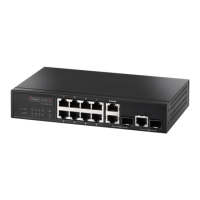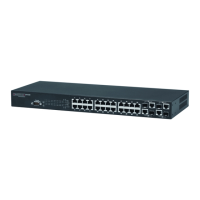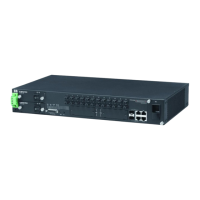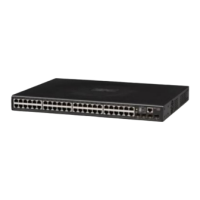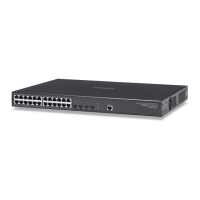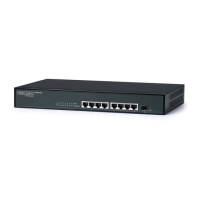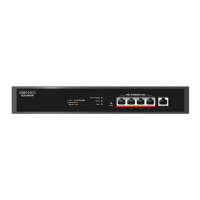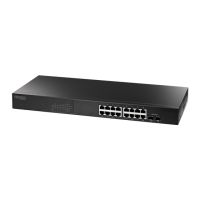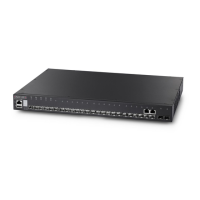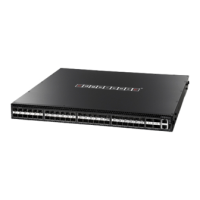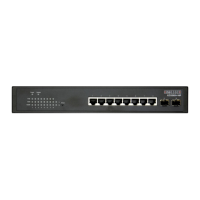C
HAPTER
34
| ERPS Commands
– 812 –
and all nodes to flush their forwarding database. The ring is now in
protection state, but it remains connected in a logical topology.
When the failed link recovers, the traffic is kept blocked on the nodes
adjacent to the recovered link. The nodes adjacent to the recovered link
transmit R-APS (NR - no request) message indicating they have no local
request. When the RPL owner receives an R-APS (NR) message it starts the
Wait-To-Recover (WTR) timer. Once WTR timer expires, the RPL owner
blocks the RPL and transmits an R-APS (NR, RB - ring blocked) message.
Nodes receiving this message flush the forwarding database and unblock
their previously blocked ports. The ring is now returned to Idle state.
Figure 303: ERPS Ring Components
Configuration Limitations for ERPS
The following configuration limitations apply to ERPS:
◆ One switch only supports two ERPS rings – each ring must have one
Control VLAN, and at most 255 Data VLANs.
◆ Ring ports can not be a member of a dynamic trunk.
◆ Dynamic VLANs are not supported as protected data ports.
◆ Exclusive use of STP or ERPS on any port.
◆ The switch takes about 350 ms to detect link-up on 1000Base-T copper
ports, so the convergence time on this port type is more than 50 ms.
◆ One VLAN must be added to an ERPS domain as the CVLAN. This can be
designated as any VLAN, other than the management VLAN. The
CVLAN should only contain ring ports, and must not be configured with
an IP address.
East Port
West Port
RPL Owner
CC Messages
RPL
x
CC Messages
(Idle State)
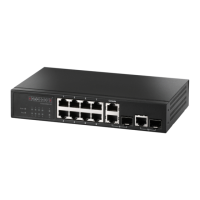
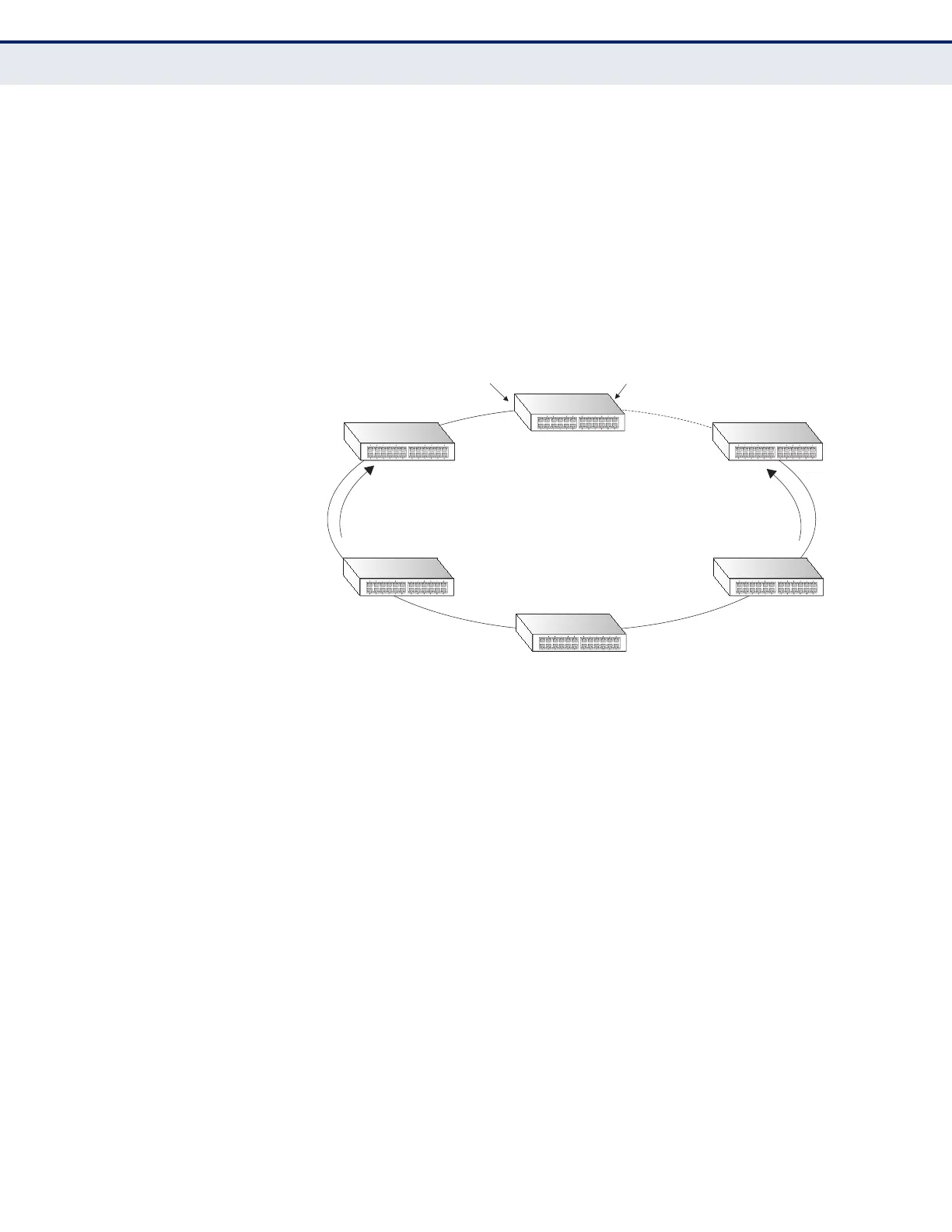